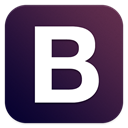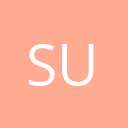Top Purecss Alternatives for Streamlined Web Development
Purecss is a fantastic choice for web developers seeking a lightweight and modular CSS framework. It provides a set of small, responsive CSS modules that are incredibly useful for any web project. However, as projects evolve and requirements change, you might find yourself looking for a Purecss alternative that offers different features, a broader community, or a more opinionated design system. This guide will explore some of the best alternatives to Purecss, helping you choose the perfect tool for your next project.
Best Purecss Alternatives
Whether you're prioritizing extensive component libraries, specific design aesthetics, or a more robust development ecosystem, these Purecss alternatives offer diverse solutions to fit your needs.

Bootstrap
Bootstrap is a widely recognized and open-source collection of tools for creating responsive browser sites and applications. As a robust Purecss alternative, it offers HTML and CSS-based design templates for typography, forms, buttons, navigation, and other interface components. It's free, open-source, and self-hosted, featuring responsive design, active development, clean design, comprehensive documentation, and a wealth of premade templates.

Bulma
Bulma is a modern CSS framework built on Flexbox, making it an excellent Purecss alternative for developers who appreciate a more modern approach to layout. It's free, open-source, and web-based, offering responsive design, HTML5 support, a lightweight footprint, and mobile-friendly features, streamlining web development.

Semantic UI
Semantic UI empowers designers and developers by creating a shared vocabulary for UI, making it a compelling Purecss alternative for those seeking more intuitive and human-friendly class names. It's free, open-source, and web-based, focusing on responsive design.

Foundation
Foundation is an easy-to-use, powerful, and flexible framework for building rapid prototypes and production code on any kind of device. As a comprehensive Purecss alternative, it's free, open-source, and web-based, offering a robust CSS framework for diverse projects.

Materialize
Materialize is a modern responsive CSS framework based on Material Design by Google. This open-source and free Purecss alternative is web-based and offers a distinct visual style, featuring Material Design components, a comprehensive CSS framework, a mobile framework, and responsive design for streamlined web development.

UIkit
UIkit is a lightweight and modular front-end framework for developing fast and powerful web interfaces. As a flexible Purecss alternative, it's free, open-source, and web-based, providing tools specifically for web development.

jQuery UI
jQuery UI is an open-source library of interface components—interactions, full-featured widgets, and animation effects—based on the stellar jQuery javascript library. While Purecss focuses on CSS, jQuery UI, being free, open-source, and web-based, offers a different angle as an alternative, providing extensive interaction, user interface elements, and widgets.

Skeleton
Skeleton is a small collection of CSS & JS files that can help you rapidly develop sites that look beautiful at any size, be it a 17" laptop screen or a mobile device. This minimalist Purecss alternative is free, open-source, and web-based, offering a CSS framework and responsive design capabilities.

Element UI
Element UI is a Vue 2.0 based component library for developers, designers, and product managers. As a Vue-centric Purecss alternative, it's free, open-source, web-based, and self-hosted, utilizing CSS, JavaScript, and Vue.js for a robust CSS framework.

Spectre.css
Spectre.css is a lightweight, responsive, and modern CSS framework for faster and extensible development. This free, open-source, and web-based Purecss alternative is self-hosted, offering a CSS framework, responsive design, and general web development features.
Choosing the best Purecss alternative depends on your project's specific needs, your team's familiarity with different frameworks, and your desired level of customization. Explore these options, try out their documentation, and pick the one that aligns best with your development workflow and design vision.